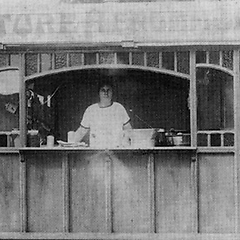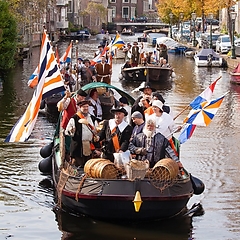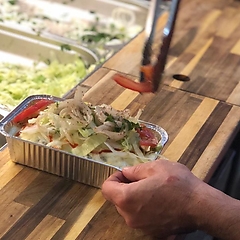The preparation of the dough of the krentenwegge (currant-bread) from Twente starts with making a brew of flour, water, fresh yeast and sourdough. The addition of sourdough ensures that the currants and raisins are better encapsulated in the dough and the result remains even creamier. Making the currant and raisin filling starts by soaking the currants and raisins in lukewarm water for 15 minutes, then air-drying the drained currants and raisins. The filling of the krentenwegge is extremely heavy and the strong proteins of the chosen flour ensure that the krentenwegge does not collapse.
Brew and dough are prepared in a dough bowl. The resulting sticky mass is mixed with the rest of the ingredients (salt and auxiliaries). After the dough is kneaded, the filling is briefly and carefully mixed into the dough to prevent the filling from breaking while turning.
After the filling has been kneaded through the dough, the dough is divided into pieces and the krentenwegge is given its first layout. That is, after a resting period of about ten minutes, the "pills," or dough pieces, are prepared for the wooden moulds. To do this, custom-made oak baking moulds are used, made up of compartments. Then the krentenwegges are baked in the residual heat of the ovens.
The success of the dough and the currant mixture is affected by the seasons. In summer or winter, in hot or cold weather or thunderstorms, the dough's resting times may vary. Immediately after baking, the krentenwegge is coated with butter for a sheen and to prevent drying out. When the krentenwegge is decorated, it is customary to cover the top with warm sifted apricot jam.
The krentenwegge is usually bought on the occasion of a special event. This can be the visit of an aunt but according to tradition, which is still honoured, the krentenwegge is ordered especially on the occasion of a birth, a death, a baptism and or wedding or a church high mass. The krentenwegge is eaten together, the sharing of the luxurious and heavy bread is essential: it connects people and generations.
It strengthens the woman who has just given birth and offers comfort to those who have lost a loved one. The bread was certainly in the past a precious and luxurious product, which gave extra splendour to a wedding and a baptism.



